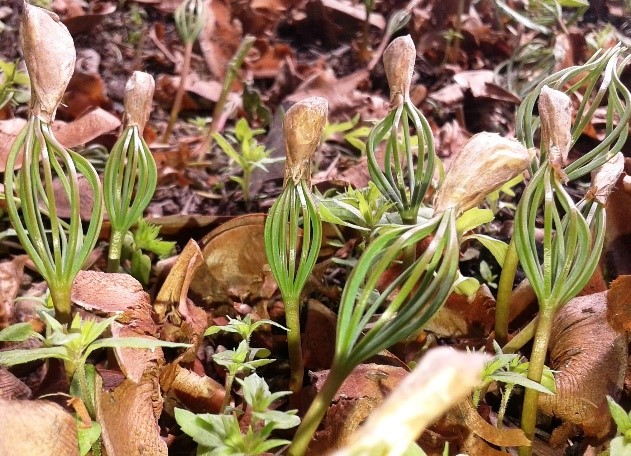The Restoration Initiative: A Pakistan story
Restoration from on top of the world – promising news from Pakistan

Photo: TRI Pakistan
At the foot of the Himalayan Mountains in northern Pakistan, at an elevation of between 2 000 m and 3 500 m, is a unique and fragile ecosystem. Known as chilgoza pine forests for the chilgoza pine trees (Pinus gerardiana) that make up most of the tree canopy, these forests provide a wealth of benefits for the communities and other living creatures that make a home here. Nuts harvested from the chilgoza pine cones are highly prized and sold on local and international markets. Mushrooms, honey and other medicinal plants are found closer to the forest floor. And the forests are home to a number of threatened species including the rare and endangered snow leopard, the Himalayan lynx, the Kashmir markhor, wolves and black bears.
Increasing demand for these forest goods, particularly for the chilgoza pine nuts that sell for anywhere from USD 20 to USD 100 per kg, together with inadequate regulations and enforcement governing the harvesting of cones, is leading to over-exploitation and degradation of the ecosystem. If nothing is done to change the current trajectory, the chilgoza pine and the natural ecosystem anchored by these trees may soon disappear.
TRI Pakistan seeks to address these challenges. Working with local communities and the Pakistan Forest Department, the project is helping to bring stakeholders together and create better policies and institutions for managing these resources. One key way is through the establishment and strengthening of CFPCCs. Comprised of local community members, relevant private-sector and civil-society representatives, and officially recognized by the local forest department, CFPCCs are directly responsible for protecting, managing – and with TRI Pakistan project help – restoring the chilgoza forests in which they reside. And because the CFPCCs are made up of local community members and leaders, they benefit from having the strong support of community members whose cooperation is essential to the success of any new management and restoration plans.
To date, 14 CFPCCs have been established with project support. While CFPCC-designed management and restoration plans vary somewhat among localities, they share a number of common elements. These include a limited and defined harvesting period for chilgoza pine cones determined each harvest season; prohibitions on the cutting of branches and collection of unripe cones; and leaving five to six trees per hectare undisturbed as a seed source for natural regeneration on degraded sites. The rules are displayed prominently in each village. In addition, the CFPCC rules stipulate that only local people may collect cones, and that no one can bring labour from outside the village to organize large-scale commercial harvesting. Together with enhanced enforcement and fines for violations, the rules help ensure that a substantial portion of the benefits from harvesting chilgoza pine nuts flow to the local community, and that all community members are afforded an equal opportunity to collect cones.
Another area of focus for the project is in strengthening the capacity of local post-harvest processors of chilgoza pine nuts, to enable community members to capture a greater share of the value-added revenue generated from the sale of pine nuts. Historically, much of the post-processing has been done in larger commercial centres away from the chilgoza pine forest communities. If local communities are able to capture a larger share of pine nut value chain revenue, it will provide an even stronger incentive to sustainably manage and protect these resources over the long term.
While the project has been in operation for just over two years, there are already signs of progress. Recent surveys conducted by FAO, forest department staff and local communities, show that new management policies put into effect by CFPCCs have allowed for natural regeneration to take place in a number of degraded sites. On average, sites under new management and protection were found to have nearly twice as many chilgoza seedlings per hectare compared with sites lacking similar management regimes.
As the project enters its third year, the focus will be on establishing and strengthening additional CFPCCs, and in capturing and sharing the experiences of this new approach to managing and restoring the chilgoza pine forests. It is anticipated that experiences and recommendations emerging from this work will be relevant not only for chilgoza pine forests – which extend into neighbouring Himalayan countries – but also for other degraded areas and regions of the world that face similar challenges of over-exploitation and poor management.



